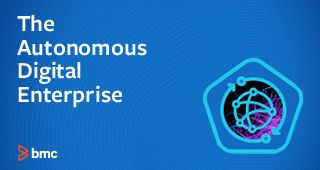Over the last extraordinary year and a half, employment has been a hot topic—both for the rise in global unemployment and, for those fortunate enough to remain employed, the overhaul in how and where people work. For that latter group, and for people slowly returning to the workforce, matters of the employee experience (EX) are moving front of mind.
EX covers the gamut of the entire employee journey, from hiring to onboarding to being an active employee to departing the workplace. And more employers are starting to recognize and appreciate that the whole experience matters. It’s just one more way that organizations are evolving to become an Autonomous Digital Enterprise (ADE) and deliver a Transcendent Customer Experience not just to external customers, but employees, too.
According to isolved’s Transforming Employee Experience: A SWOT Analysis of 500 Human Resources Departments, 92 percent of HR leaders said that the employee experience is a top priority for them in 2021. Microsoft is betting big on EX, announcing the Viva platform to capitalize on what it calls a $300 billion market of disconnected and underutilized “services, infrastructure, and hundreds of tools.” Viva will lean into that gap with a solution that includes opportunities to collaborate, leverage actionable insights, pursue professional development, and tap into a crowdsourced knowledge library.
Upskilling
Once workers are fully employed and busy with their daily tasks, taking the time to learn new things is a luxury many can’t afford, but keeping existing skills sharp—and learning new ones—will help ensure they remain relevant in an ADE. It’s also good for business. In the World Economic Forum and PwC’s Upskilling for Shared Prosperity report, they point to the net benefits yielded from upskilling, including the potential to boost global GDP by $6.5 trillion by 2030 if skills gaps are closed by 2028.
Future roles will evolve to require more soft skills such as creativity, innovation, and empathy, which are complementary to automation—a key component of an ADE. By automating repetitive and mundane manual tasks, employees will have more time to focus on higher-value learning and work. The study estimates that upskilling could create 5.3 million net new jobs by 2030, many of which will also support an organization’s ability to adopt new technologies.
Managing the day to day
Keeping employees engaged, and recognizing their talent and dedication, is integral to retaining them. Gallup research found that the number one reason people change jobs is for career growth opportunities, indicating that they’re not being considered for internal opportunities to the degree that they should, and only two in ten employees say that their performance is managed in a way that motivates them to do outstanding work.
Gallup advises considering employees as consumers of the workplace. If you wrap your head around that, the basics are clear—you want them to be happy with their experience; you want them to return every day; and you recognize that their satisfaction is integral to the success of your business. To that end, tools are now available to help build that engagement throughout the employee journey, just like you would for a customer journey.
Employee surveys and Net Promoter Scores (NPS) help leaders keep a finger on the pulse of their employee satisfaction while internal communities open the lines of communications across matrixed organizations, empower employee recognition, and create opportunities for employees to feel included and part of the larger company. Incentivizing hiring through employee referrals is also a great way to build brand awareness, recognition, and equity in your business.
The new models of working
Before 2020, remote working was still a relatively niche activity, relegated to few roles and even fewer companies. Since the pandemic began, remote working has hit its stride (whether voluntarily or forced) for a significant portion of the workforce, so much so that big tech companies that once thrived on enticing employees into office complexes that were a mix of theme parks and collaborative workspaces have now recognized and accepted that their employees can work just fine sight unseen. Those same companies are also extending their remote work options through 2021 and beyond. Salesforce made news when it announced that the vast majority of its employees can work wherever, whenever, and however they choose—forever.
Sending employees home to keep business moving happened overnight, but the acclimation took some time, dependent on how far along companies were in their digital transformation. From outfitting staff with the right hardware and software to employees figuring out connectivity at home—and managing household and family commitments in tandem—there were growing pains to be overcome. We’re almost two years into that routine, and employers have expanded the ways they can help ensure a positive EX.
Considerations now don’t just include whether the right tech is in the hands of employees—that’s of course the primary concern—but they’re also recognizing the importance of overall employee wellness, through outreach with mental health resources, flexible scheduling for workers juggling family priorities and their day jobs, and retraining leaders in how to manage remote teams. In isolved’s aforementioned study, almost a third of the HR leaders surveyed said the remote work environment was a key determinant pushing EX to the top of their priority list.
Diversity, equity, and inclusion (DEI)
Another big change has been the recognition that there’s still much work to be done around diversity, equity, and inclusion (DEI). And an organization’s DEI initiatives are increasingly factoring into where and how people work. BetterUp’s survey, The value of belonging at work: New frontiers for inclusion, says that employees who feel like they belong are 167 percent more likely to recommend their organization as a great place to work. The report also cites concrete business benefits to fostering an inclusive EX in the workplace. According to its benchmarks, if all workers at a 10,000-employee company felt a strong sense of belonging, it would:
- Save $10 million annually in turnover costs
- Yield a productivity gain of nearly $2.5 million per year from over 2,800 fewer sick days
Ensuring a Transcendent Customer Experience for employees is just as important as ensuring that external customers are satisfied. Happy employees deliver better experiences to customers and better business outcomes. It’s a cycle worth perpetuating, and integral to helping your business on its journey to becoming an Autonomous Digital Enterprise.
Originally published on CIO.







